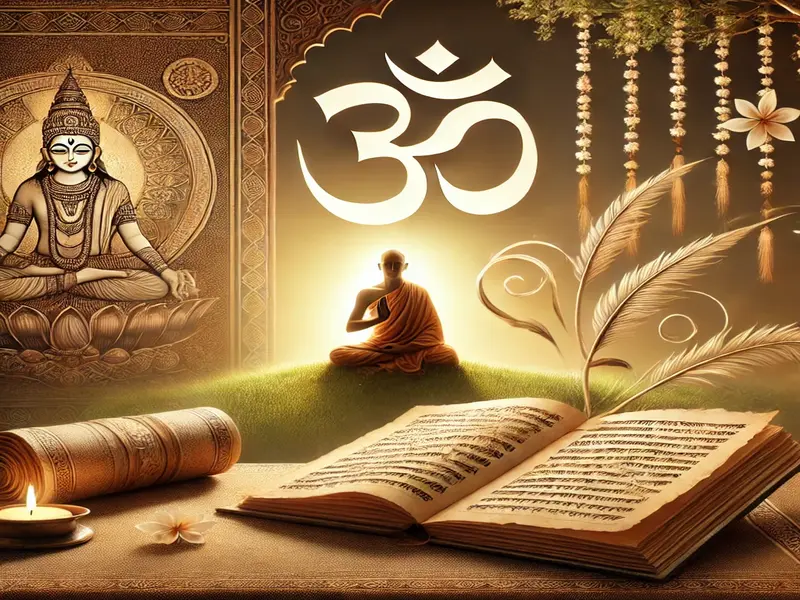The Upanishads, also known as Vedanta, are ancient Hindu scriptures that delve deep into the mysteries of existence, consciousness, and the ultimate reality (Brahman). These texts go beyond rituals and religious practices, guiding seekers toward self-realization and inner peace.
In this blog, we explore some hidden teachings of the Upanishads that can transform the way we perceive life, self, and the universe.
1. “Tat Tvam Asi” – You Are That
One of the most profound teachings from the Chandogya Upanishad is “Tat Tvam Asi” (तत् त्वम् असि), meaning “You are That”. This phrase implies that the individual soul (Atman) and the universal consciousness (Brahman) are one and the same.
🔹 Modern Relevance – This teaching suggests that we are not separate from the universe but a part of its divine essence. When we realize this, ego dissolves, and we experience a sense of oneness with all.
2. “Aham Brahmasmi” – I Am Brahman
From the Brihadaranyaka Upanishad, this phrase translates to “I am Brahman”, reinforcing the idea that our true nature is not limited to the body or mind but is infinite consciousness.
🔹 Modern Relevance – Instead of identifying with temporary roles (father, mother, employee, etc.), realizing that we are pure consciousness helps us detach from suffering and embrace life with clarity.
3. The Four States of Consciousness
The Mandukya Upanishad describes the four states of consciousness:
1️⃣ Jagrat (Waking State) – When we interact with the world through our senses.
2️⃣ Swapna (Dream State) – When the mind creates its own reality in dreams.
3️⃣ Sushupti (Deep Sleep State) – A state of rest, where the ego is absent.
4️⃣ Turiya (Pure Consciousness State) – The highest state, beyond waking, dreaming, and sleeping. It is pure bliss and awareness.
🔹 Modern Relevance – Practicing meditation and mindfulness can help us experience Turiya, leading to inner peace and self-awareness.
4. “Neti Neti” – Not This, Not This
The Upanishads teach self-inquiry through the method of Neti Neti, meaning “Not this, Not this”. Instead of defining who we are, this approach eliminates what we are not.
🔹 Modern Relevance – By questioning our identity (Am I just my body? My thoughts? My emotions?), we gradually detach from illusions and realize our eternal self.
5. The Impermanence of the Material World
The Katha Upanishad narrates the story of Nachiketa, a young seeker who asks Yama (the god of death) about the ultimate truth. Yama teaches him that all material things are temporary, but the soul is eternal.
🔹 Modern Relevance – Most of our stress and anxiety come from attachment to temporary things—money, status, possessions. The Upanishads remind us to focus on the eternal, not the ephemeral.
6. The Power of “Om” (ॐ)
The Mandukya Upanishad describes “Om” (ॐ) as the sound of the universe, representing the entire cosmic existence. Chanting Om aligns the body and mind with the higher consciousness.
🔹 Modern Relevance – Scientific studies show that chanting Om can reduce stress, increase focus, and improve mental clarity.
Conclusion: Applying Upanishadic Wisdom in Life
The teachings of the Upanishads are timeless and hold the key to true peace and self-realization. By practicing self-inquiry, detachment, meditation, and mindfulness, we can move closer to understanding our true nature and experiencing bliss.
✨ “You are not a drop in the ocean; you are the entire ocean in a drop.” – Rumi ✨
Would you like to explore any of these concepts in detail? Let me know in the comments! 😊🙏

Leave a Reply